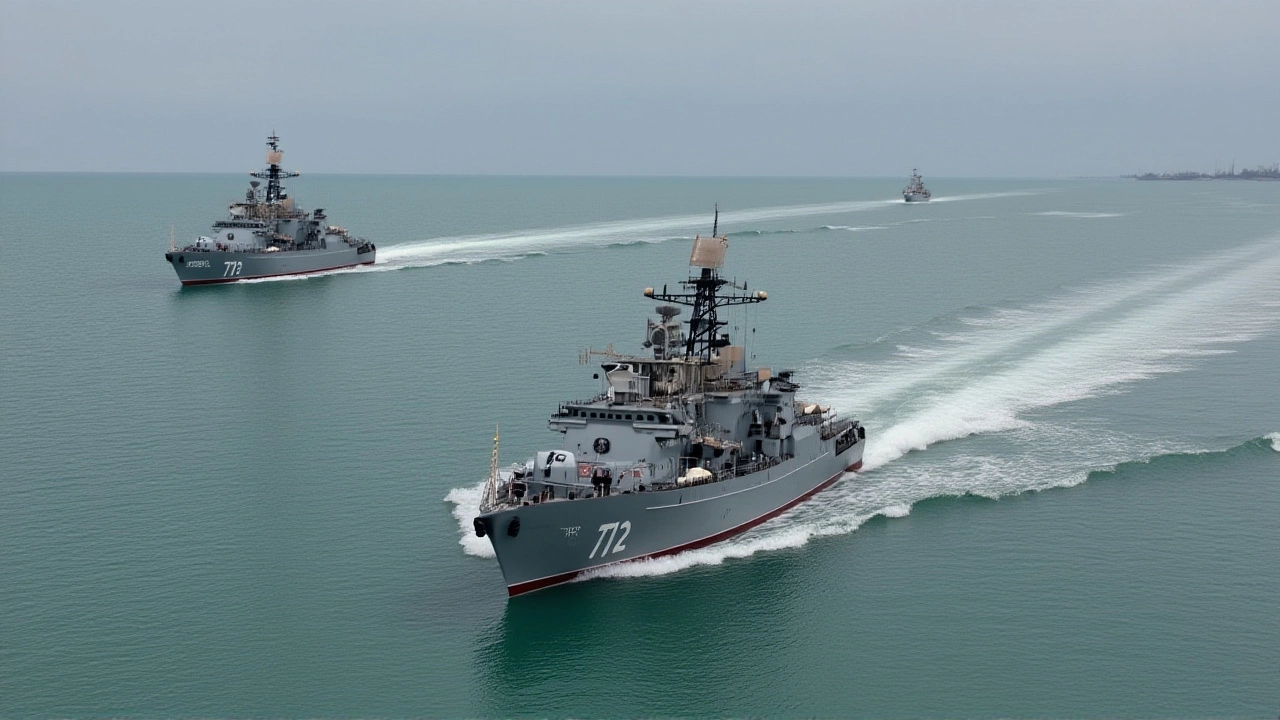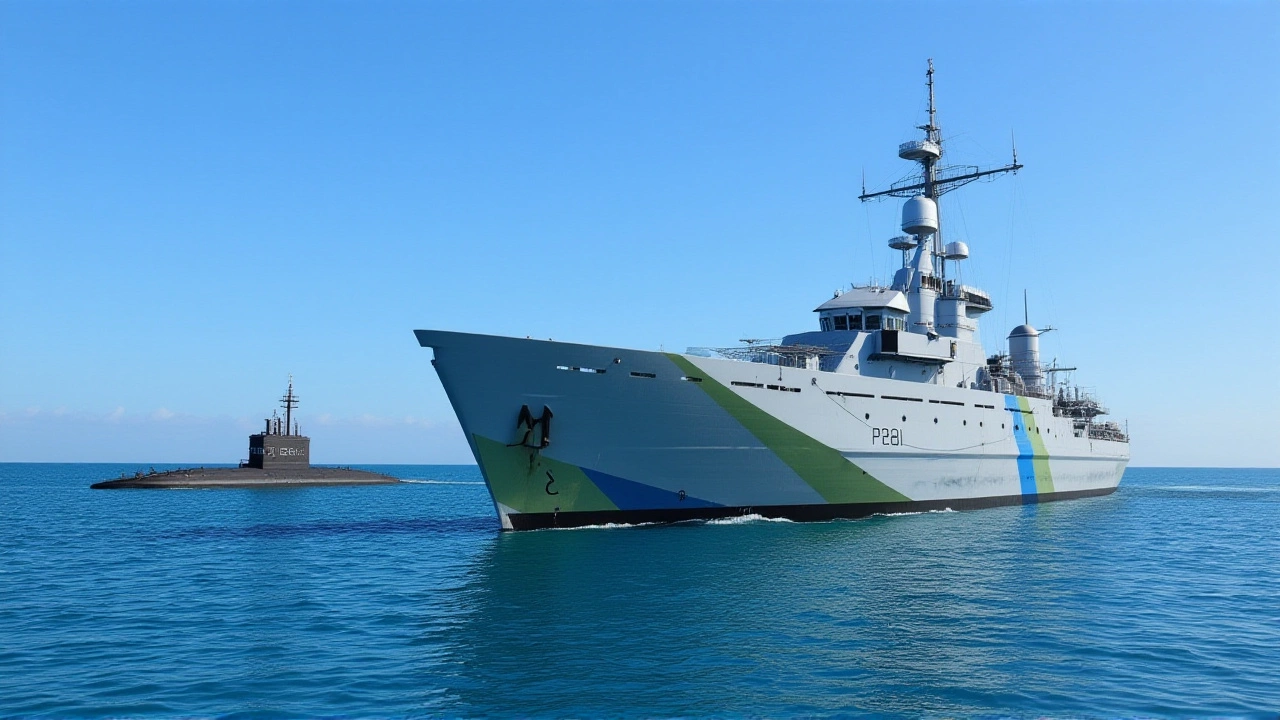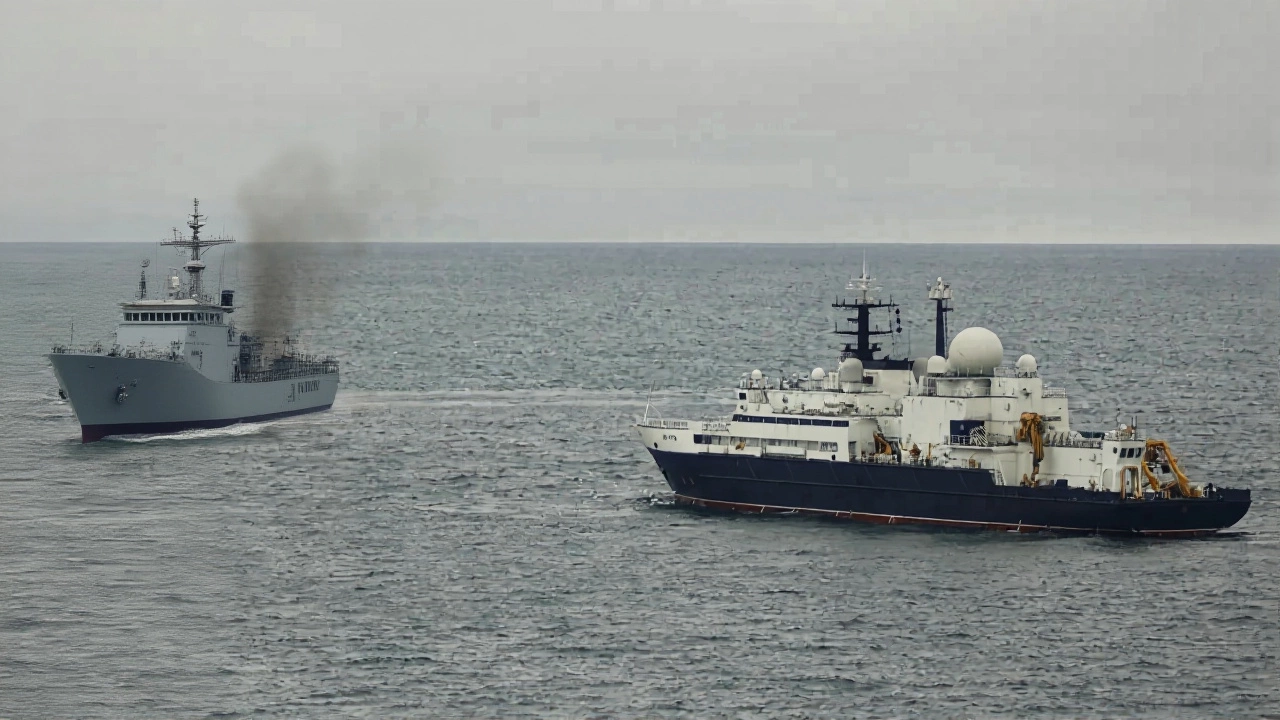On November 24, 2025, the UK Ministry of Defence confirmed that the Royal Navy intercepted two Russian warships — the corvette RFN Stoikiy and the tanker Yelnya — as they passed through the English Channel and Dover Strait. The operation, conducted by the offshore patrol vessel HMS Severn, marked one of the most visible displays of NATO’s growing vigilance over Russian naval movements in Europe’s most critical maritime chokepoint. What’s striking isn’t just the interception — it’s the context. Over the past two years, Russian naval activity near British waters has surged by exactly 30%, according to John Healey, UK Defense Secretary. And this isn’t an isolated incident.
Shadowing in Real Time
HMS Severn didn’t just spot the Russian vessels — it followed them, day and night, from the moment they entered the Channel until handing off surveillance to a NATO ally off the coast of Brittany, France. The Ministry of Defence described the operation as "round-the-clock shadowing," with the British ship maintaining a discreet but unwavering distance. "We see you," read the official statement titled We see you: Armed forces on patrol around the UK in response to Russian activity. It wasn’t just a message to Moscow. It was a reassurance to allies.
There’s no bluff here. The Royal Navy didn’t just monitor — it prepared. "Remained ready to respond to any unexpected activity," the statement read. That readiness is now standard. In the past year, NATO has seen Russian vessels probe deeper into waters once considered routine transit routes. Now, every ship is treated as a potential threat.
The Yantar Factor
While HMS Severn tracked the Stoikiy and Yelnya, another Russian vessel — the Yantar — was under close watch far to the north. The Yantar, a specialized intelligence-gathering ship, entered UK waters north of Scotland and was accused of using "deeply dangerous" laser technology to disrupt Royal Air Force P-8A Poseidon pilots during surveillance missions. The lasers, described by military sources as "blindingly bright" and capable of temporarily disabling optical sensors, aren’t just annoying — they’re a violation of international norms for aerial operations.
In response, the UK deployed a Type 23 frigate and additional P-8A aircraft to monitor the Yantar. The message was clear: we’re watching, and we’re not backing down. The Yantar, according to British intelligence, is designed not for fishing or research — but for mapping undersea cables. The same cables that carry 95% of global internet traffic. The same cables that, according to NATO, have been targeted in suspected sabotage incidents across the North Sea since 2022.

NATO’s Northern Shield
The UK didn’t act alone. In a coordinated move, three P-8A Poseidon aircraft were deployed to Keflavík Air Base in Iceland. That’s not a coincidence. Iceland sits at the crossroads of the North Atlantic and Arctic — the new frontier of Russian naval expansion. These aircraft, equipped with sonobuoys and radar capable of detecting submarines at extreme depths, are now part of a wider NATO mission to monitor Russian surface and underwater movements. It’s a quiet arms race — one played out in sonar pings and satellite imagery.
Meanwhile, British forces are now patrolling "from the English Channel to the High North," as the Ministry put it. That’s a 2,000-mile arc of surveillance, covering everything from the busy shipping lanes near Calais to the icy waters near the Faroe Islands. It’s a logistical feat — and a financial one. The Royal Navy’s patrol budget has risen 17% since 2023, with most of the increase tied to maritime surveillance.
Russia’s Response: Denial and Defiance
The Russian Embassy in London, located at 6 Dartmouth Street in Westminster, fired back with a statement calling the allegations "provocative." "Our ships operate legally in international waters and pose no threat to Britain’s security," the embassy insisted. The tone was calm — but the message was sharp: don’t escalate.
Yet the timing speaks louder than words. The Russian Navy has been testing NATO’s patience since 2022, with more frequent transits through the North Sea, increased submarine activity near the UK’s nuclear submarine base at Faslane, and the repeated presence of the Yantar near undersea infrastructure. The 30% increase isn’t a statistical anomaly — it’s a pattern. And the UK isn’t the only one noticing. Norway, Denmark, and the Netherlands have all reported similar upticks in Russian vessel activity.

Why This Matters
Undersea cables aren’t just infrastructure. They’re lifelines. If one is cut — whether by accident, sabotage, or a deliberate act of hybrid warfare — the economic and communication fallout could ripple across Europe for days. The Yantar’s presence near these cables isn’t random. It’s reconnaissance. And reconnaissance is the first step before action.
For the Royal Navy, this isn’t about confrontation. It’s about deterrence. Every shadowing mission, every P-8A patrol, every frigate on station sends a signal: we know what you’re doing. And we’re ready.
Frequently Asked Questions
How has Russian naval activity changed near the UK since 2023?
According to the UK Ministry of Defence, Russian naval movements near British waters have increased by exactly 30% between November 2023 and November 2025. This includes more frequent transits through the English Channel, increased submarine activity near Scotland, and repeated deployments of the intelligence vessel Yantar near undersea cables. The pace of encounters has nearly doubled compared to pre-2022 levels.
What is the Yantar, and why is it considered a threat?
The Yantar is a Russian Navy intelligence vessel designed for deep-sea surveillance and mapping of undersea infrastructure. British officials accuse it of using high-powered lasers to disrupt RAF P-8A Poseidon aircraft during surveillance missions — a tactic described as "deeply dangerous." Its presence near critical cables suggests it’s gathering data for potential sabotage, not scientific research.
Why is Iceland important to this operation?
Keflavík Air Base in Iceland sits at a strategic chokepoint between the North Atlantic and Arctic. Deploying three P-8A Poseidon aircraft there allows NATO to monitor Russian naval movements heading toward Greenland, the Faroes, and the Norwegian Sea — key routes for submarines and surface vessels. It’s a force multiplier for surveillance across the entire Northern Flank.
What’s the UK’s long-term strategy against Russian naval threats?
The UK is shifting from reactive patrols to persistent deterrence. That means maintaining year-round surveillance from the Channel to the Arctic, expanding NATO coordination, investing in undersea cable monitoring tech, and preparing for hybrid threats like laser disruption. The Royal Navy’s 2025 defense review explicitly names Russian maritime activity as its top operational priority.
Have similar incidents happened before?
Yes. In 2022, a Russian submarine was tracked near the UK’s nuclear submarine base at Faslane. In 2023, a Russian spy ship was caught mapping a cable near the Shetland Islands. But the scale and frequency since 2024 are unprecedented. The 30% increase, combined with the laser incidents, marks a qualitative shift — from observation to intimidation.
Is this a sign of impending conflict?
Not necessarily. But it’s a sign of escalating tension. Both sides are playing a dangerous game of cat-and-mouse, where miscommunication could trigger a crisis. The UK’s goal is to prevent escalation through visibility and readiness — not provocation. Still, the risk of accidental confrontation, especially in icy or foggy waters, has never been higher.
